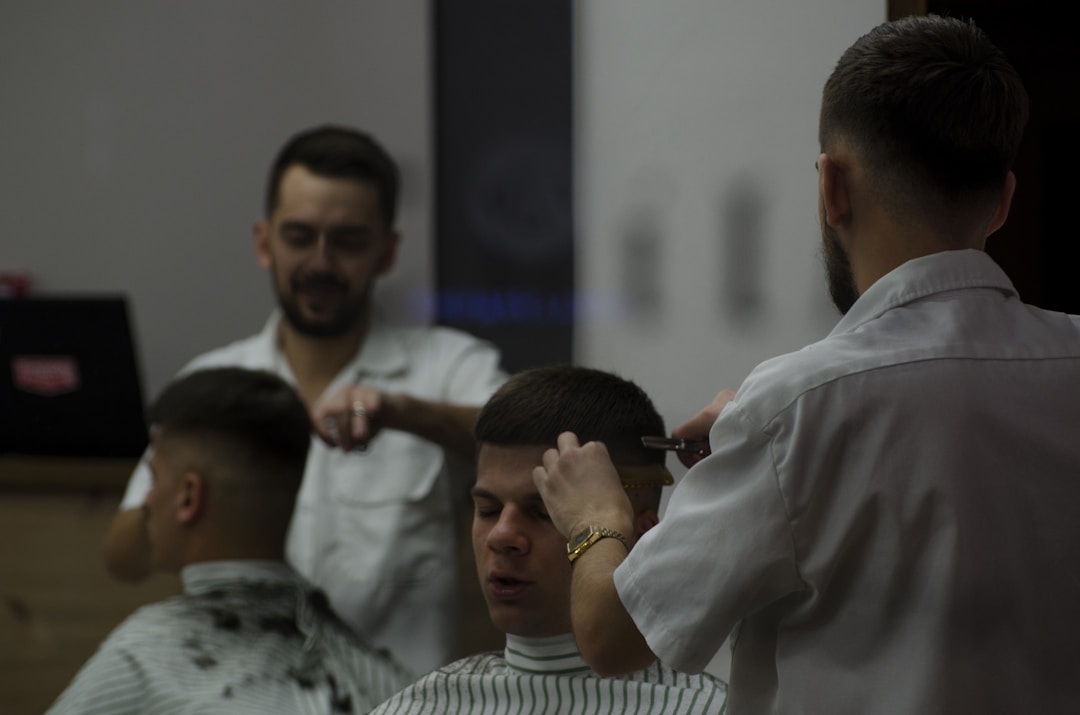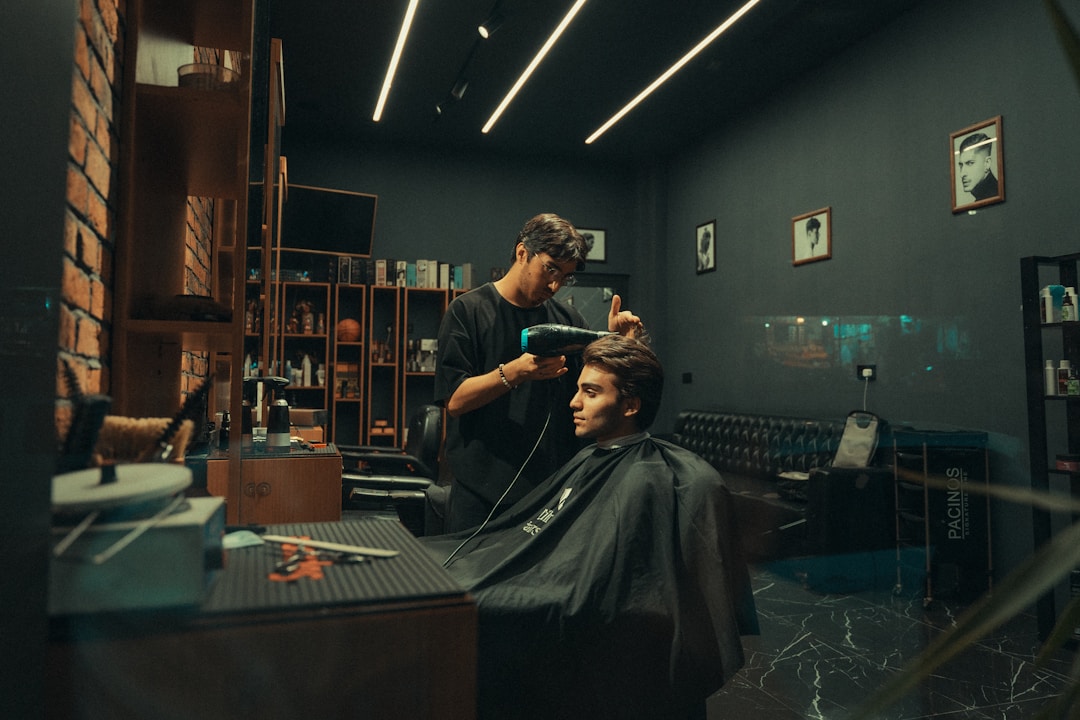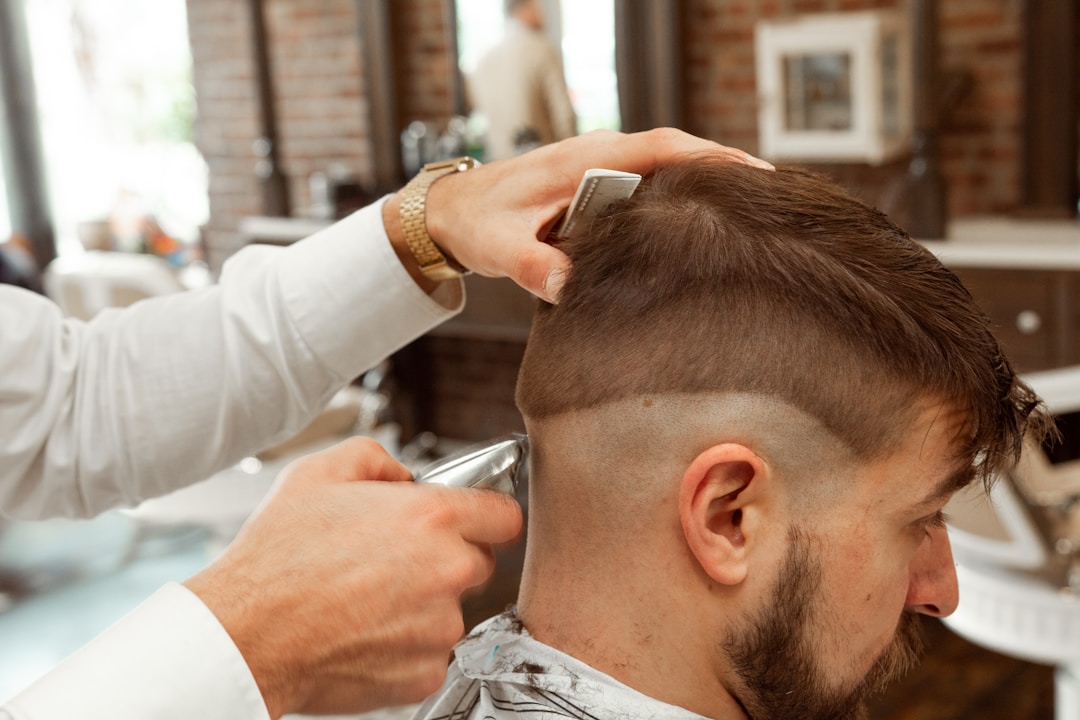
Low Fade vs High Fade Comparison 2025
Complete comparison guide covering visual differences, maintenance requirements, style impact, and expert recommendations for choosing your ideal fade
Choosing between a low fade and high fade represents one of the most impactful decisions in men's hairstyling. While both techniques use gradual clipper transitions from longer to shorter hair, the placement, visual impact, and practical implications differ dramatically.
This comprehensive comparison breaks down every meaningful difference between low and high fades—from technical execution and maintenance requirements to face shape compatibility and professional appropriateness. Whether you're choosing your first fade or considering switching styles, you'll discover which approach aligns with your lifestyle, budget, and aesthetic goals.
At DIDA NYC Hair Studio, we customize both low and high fades to each client's unique features, professional needs, and personal style—ensuring your fade enhances rather than compromises your overall appearance.
Visual Differences: Placement and Contrast

Low Fade: Subtle Transition
Low fade begins the transition just above the ears, typically 0.5-1 inch above the ear's top point:
- • Start Point: Fade begins immediately above ear line, roughly at temple bottom
- • Transition Zone: Short vertical distance (0.5-1 inch) creates tight, subtle blend
- • Hair Coverage: Maintains fuller hair on sides and back, shows less scalp
- • Visual Impact: Conservative, understated, professional—doesn't draw attention to the fade itself
- • Contrast Level: Gradual transition from top length to faded sides creates soft, natural appearance
- • Side Profile: Continuous hair coverage from top to neck with minimal exposed skin
High Fade: Bold Statement
High fade starts the transition 2-3 inches above the ears, near or above the temple area:
- • Start Point: Fade begins at temple level or slightly above, well above ear top
- • Transition Zone: Longer vertical distance (2-3 inches) creates extended blend area
- • Hair Coverage: Significantly less hair on sides, reveals substantial scalp area
- • Visual Impact: Dramatic, modern, eye-catching—the fade becomes a focal point
- • Contrast Level: Sharp distinction between full top and faded sides creates bold, defined look
- • Side Profile: Exposed skin extends high up sides and back, emphasizing head shape and top volume
Key Visual Distinctions
Low Fade Visual Profile:
- → Blends into hairstyle seamlessly
- → Hair appears to "flow" from top to sides
- → Fade itself is secondary to overall style
- → Works as foundation, not focal point
- → Subtle enhancement of natural proportions
High Fade Visual Profile:
- → Fade becomes defining characteristic
- → Clear separation between top and sides
- → Creates "floating top" appearance
- → Demands attention and makes statement
- → Dramatic alteration of head proportions
Maintenance Requirements: Time and Cost Analysis
Maintenance frequency dramatically differs between low and high fades, directly impacting annual costs and time commitment:
Low Fade Maintenance
Optimal Frequency:
Every 14-21 days (bi-weekly to 3-week cycle)
Why It Lasts Longer:
Gradual transition disguises growth; subtle placement means imperfections less noticeable
Annual Cuts:
17-26 appointments per year
Annual Cost:
$765-1,170 (at $45/cut)
Time Investment:
8.5-13 hours annually (30 min per visit)
Growth tolerance: Can extend to 4 weeks in winter or low-visibility periods without looking unkempt
High Fade Maintenance
Optimal Frequency:
Every 7-10 days (weekly to 10-day cycle)
Why It Requires More:
Dramatic contrast shows growth immediately; high placement means even slight growth is obvious
Annual Cuts:
36-52 appointments per year
Annual Cost:
$1,620-2,340 (at $45/cut)
Time Investment:
18-26 hours annually (30 min per visit)
Growth tolerance: Starts looking grown-out after 12-14 days; difficult to extend without losing signature sharpness
Maintenance Cost Comparison: 5-Year Analysis
| Fade Type | Year 1 | Year 3 | Year 5 | 5-Yr Total |
|---|---|---|---|---|
| Low Fade (bi-weekly) | $1,170 | $1,241 | $1,316 | $6,205 |
| High Fade (weekly) | $2,340 | $2,481 | $2,631 | $12,411 |
| Difference | -$1,170 | -$1,240 | -$1,315 | -$6,206 |
Assumes 3% annual price inflation. Low fade saves $6,206 (50%) over 5 years compared to high fade.
Style Impact: Professional vs Casual Environments

Low Fade: Swiss Army Knife Versatility
Professional Environments (Excellent):
- • Corporate offices, finance, law, consulting—low fade reads as polished and appropriate
- • Conservative industries appreciate the subtle, non-distracting aesthetic
- • Pairs perfectly with business attire without appearing too trendy or casual
- • Senior leadership and client-facing roles benefit from understated professionalism
Casual Settings (Very Good):
- • Works seamlessly in weekend, social, and informal contexts without feeling too formal
- • Adapts to both trendy and classic top styles—from pompadours to textured crops
- • Doesn't limit styling options or feel "locked into" a specific aesthetic
Formal Events (Excellent):
- • Weddings, galas, and black-tie events—low fade complements formal wear perfectly
- • Traditional enough for conservative family events, modern enough for contemporary celebrations
Verdict: Low fade transitions effortlessly across all contexts—the most versatile option for men with varied lifestyle demands.
High Fade: Specialized Impact Tool
Professional Environments (Context-Dependent):
- • Excellent: Creative industries (advertising, design, entertainment), tech startups, modern agencies
- • Good: Business casual environments, younger workforce industries, customer-facing roles in trendy sectors
- • Risky: Traditional corporate, conservative finance/law, senior executive roles in established firms
- • High fade signals modernity and edge—assess your industry's culture before committing
Casual Settings (Excellent):
- • Nightlife, social events, fashion-forward contexts—high fade makes strong impression
- • Athletic and fitness environments embrace the clean, performance-oriented aesthetic
- • Music festivals, art events, creative gatherings—high fade fits perfectly
Formal Events (Moderate):
- • Modern weddings and contemporary formal events—works well with fashion-forward formalwear
- • Traditional formal events (country club weddings, classical galas)—may appear too casual or trendy
- • Depends heavily on styling: slicked-back top with high fade can achieve formal polish
Verdict: High fade excels in modern, casual, and creative contexts but has limitations in conservative professional settings—choose based on lifestyle balance.
Face Shape Compatibility: Choosing Your Best Fade
Fade placement significantly impacts facial proportions and perceived shape. Strategic selection enhances your natural features:
Round Faces
Best Choice: High Fade
- • High placement creates vertical lines that elongate the face
- • Reduces visual width by drawing eye upward rather than across
- • Pair with height on top for maximum face-lengthening effect
- • Low fade can emphasize roundness—avoid unless desired aesthetic
Oval Faces
Best Choice: Either—Most Versatile
- • Balanced proportions work with both low and high fades equally well
- • Choose based on style preference, professional needs, or maintenance tolerance
- • Low fade maintains harmony; high fade adds modern edge without proportion issues
- • Oval face is "golden" shape—experiment freely with fade heights
Square Faces
Best Choice: Low Fade
- • Low fade softens strong angular jawline without competing with it
- • Maintains masculine structure while adding refined polish
- • High fade can over-emphasize jaw width—though works if that's desired look
- • Low fade complements rather than competes with natural strong features
Long/Oblong Faces
Best Choice: Low Fade
- • Low fade adds horizontal visual weight, reducing excessive length appearance
- • Fuller sides balance elongated facial proportions
- • High fade exacerbates length by creating more vertical visual lines—avoid
- • Pair low fade with fuller, wider top styles for optimal face-widening effect
Heart/Triangle Faces
Best Choice: Either, Different Effects
- • Low fade: Adds weight to narrower chin/jaw area, creating more balance
- • High fade: Emphasizes cheekbones and temple width (highlight wider forehead)
- • Choose based on whether you want to balance proportions (low) or accentuate them (high)
- • Both work—decision depends on aesthetic goal and feature emphasis preference
Diamond Faces
Best Choice: Low Fade
- • Low fade broadens narrower forehead and chin areas for better proportion
- • Fuller sides balance prominent cheekbones without adding competing lines
- • High fade can over-emphasize cheekbone width—though acceptable if desired
- • Pair low fade with forward-brushed or side-swept styles to widen forehead visually
Top Styling Compatibility: What Works Best
Low Fade Top Style Pairings
Conservative/Professional Tops:
- • Classic side part: Timeless, executive-appropriate
- • Ivy League/crew cut: Clean, athletic, universally acceptable
- • Short textured crop: Modern but refined
- • Low-fade transitions support business-appropriate top lengths perfectly
Trendy/Fashion-Forward Tops:
- • Medium-length quiff: Adds height without excessive drama
- • Textured French crop: Contemporary with controlled volume
- • Slicked-back undercut: Sophisticated edge without extremes
- • Low fade allows trendy tops while maintaining professional credibility
Key advantage: Low fade doesn't demand specific top styling—works with nearly any length or style from buzz cuts to longer flow styles.
High Fade Top Style Pairings
Short/Minimal Tops:
- • Buzz cut high fade: Military precision, ultra-clean aesthetic
- • Short crop high fade: Modern minimalism, low-maintenance edge
- • Works well but creates very exposed, bold look—commit to the statement
Medium-to-Long Tops (Optimal):
- • High pompadour: Dramatic height maximizes high fade impact
- • Long textured top: Creates "floating hair" effect, fashion-forward
- • Curly/wavy tops: Natural volume contrasts beautifully with clean sides
- • High fade demands substantial top length for proportional balance
Key consideration: High fade works best with medium-to-long tops (2-6 inches) for visual balance—short tops can create disproportionate "pinhead" appearance.
Decision Framework: Choosing Your Ideal Fade
Choose Low Fade If You:
- ✓ Work in conservative professional environment (corporate, finance, law, consulting, traditional industries)
- ✓ Want versatility across contexts (seamless transition from office to weekend to formal events)
- ✓ Prefer lower maintenance (bi-weekly cuts acceptable, less frequent barber visits, lower annual cost)
- ✓ Have round, long, or diamond face shape (low fade enhances rather than exacerbates proportions)
- ✓ Want understated, classic aesthetic (fade as foundation, not focal point of hairstyle)
- ✓ Value cost efficiency (saves $6,000+ over 5 years compared to high fade maintenance)
- ✓ Appreciate gradual change (can test fade approach without dramatic commitment)
Choose High Fade If You:
- ✓ Work in creative or modern industry (tech, advertising, entertainment, fashion, design, startups)
- ✓ Want bold, statement-making style (fade becomes defining characteristic of appearance)
- ✓ Commit to frequent maintenance (weekly or 10-day cuts acceptable, enjoy barber ritual, maintenance budget available)
- ✓ Have oval or heart face shape (high fade enhances proportions or balances features effectively)
- ✓ Embrace modern, fashion-forward aesthetic (prioritize contemporary trends over timeless classics)
- ✓ Have medium-to-long top length (2-6 inches on top creates proportional balance with high sides)
- ✓ Want dramatic transformation (ready for significant change in appearance and style identity)
Frequently Asked Questions
Ready to Choose Your Perfect Fade?
Visit DIDA NYC Hair Studio in Queens for expert consultation on low fade vs high fade selection. Our barbers assess your face shape, lifestyle, and style goals to recommend and execute your ideal fade with precision.